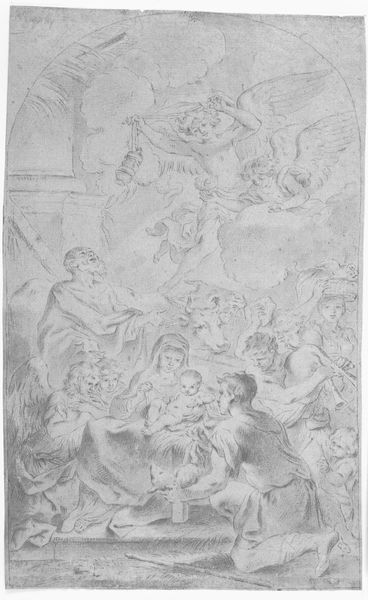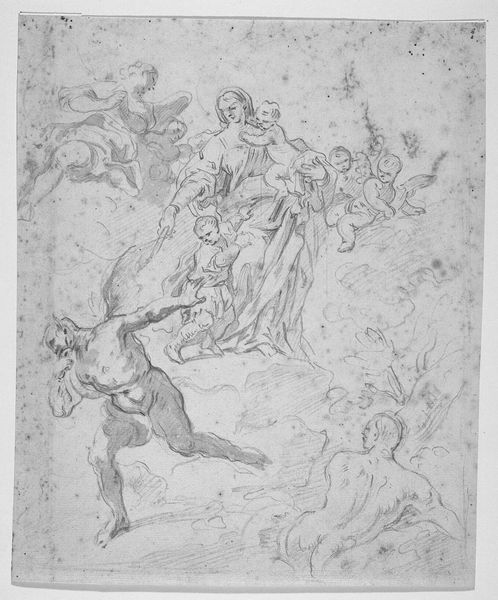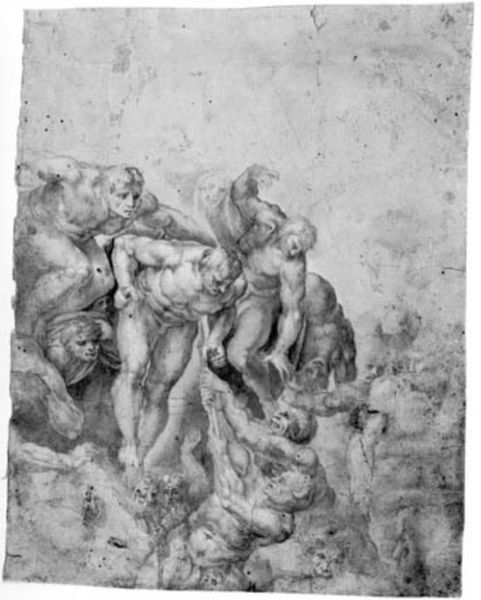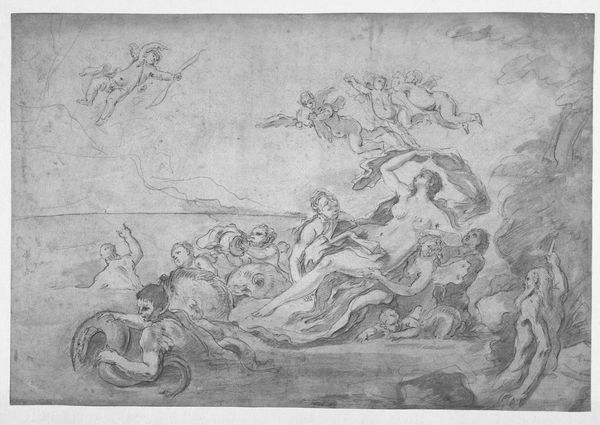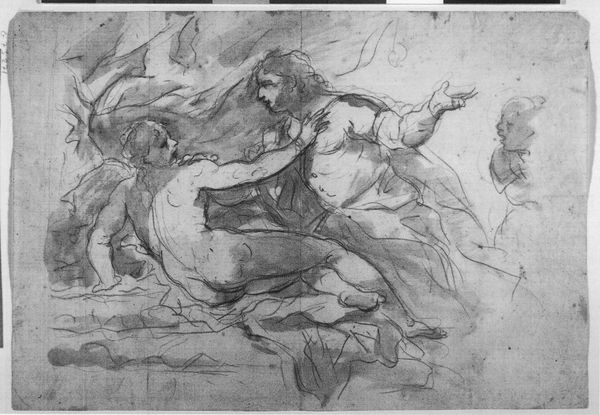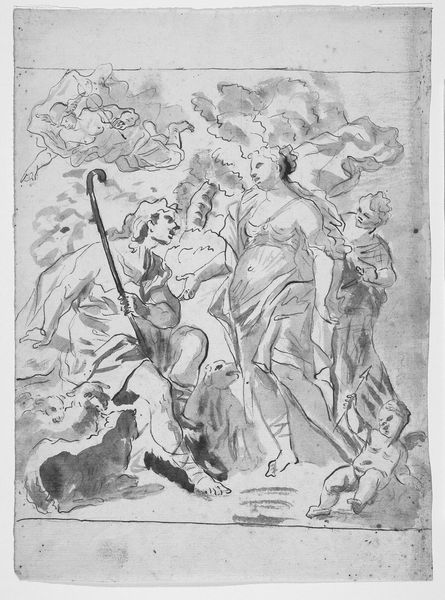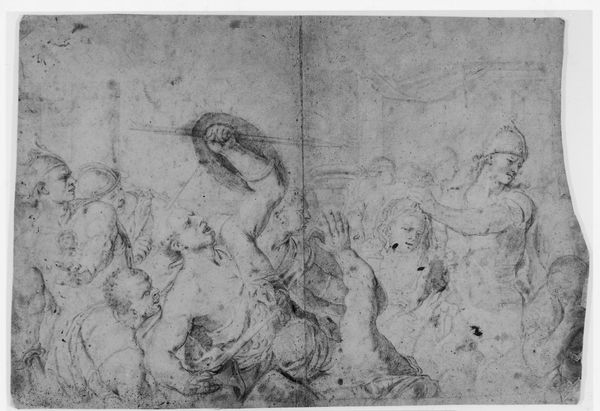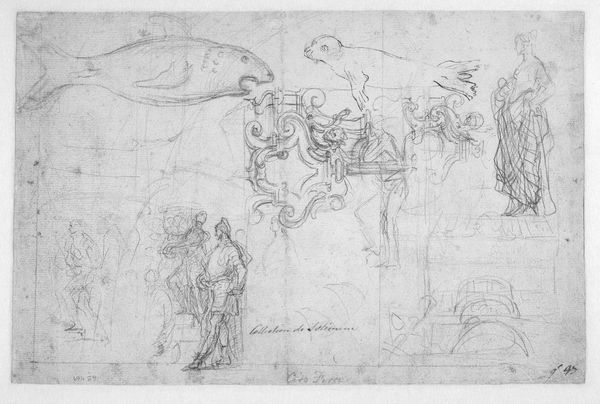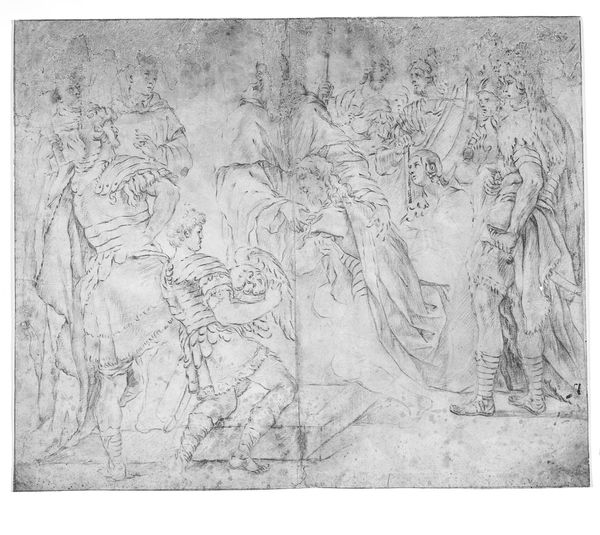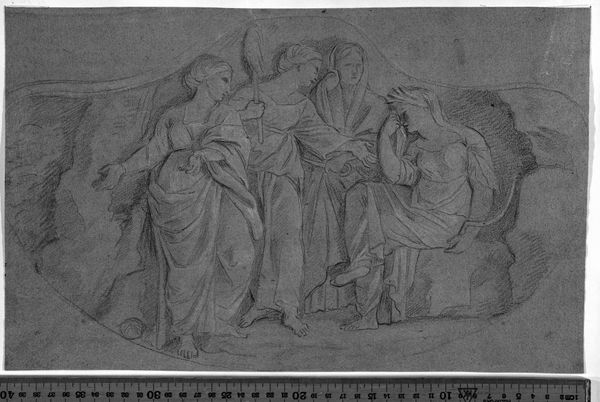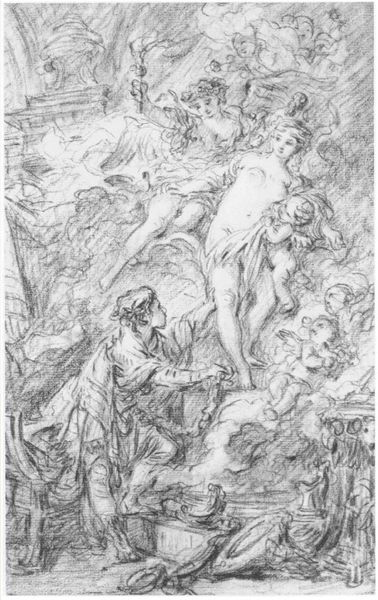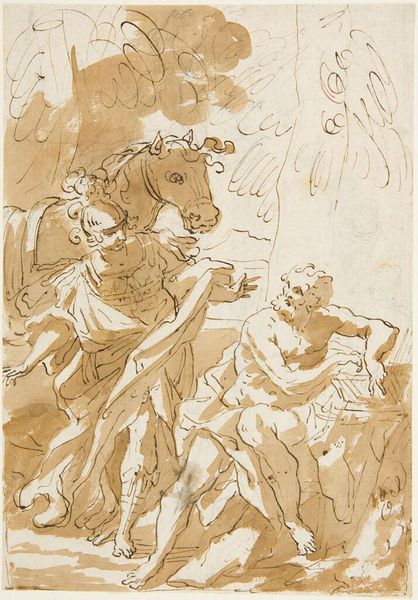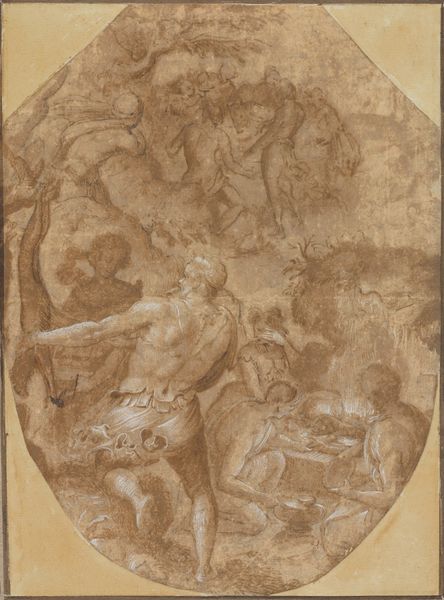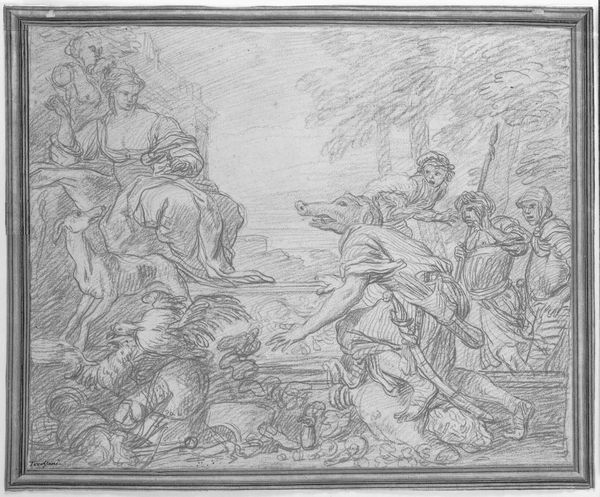
drawing, ink
#
drawing
#
baroque
#
charcoal drawing
#
figuration
#
ink
#
history-painting
#
charcoal
Dimensions: 202 mm (height) x 278 mm (width) (bladmaal)
Curator: This is an ink and charcoal drawing of “St. John the Baptist in Glory,” made sometime between 1650 and 1699 by an anonymous artist. It's currently held here at the SMK, Statens Museum for Kunst. Editor: My first thought is how dramatically Baroque it feels—the theatrical composition, the cherubic figures swirling around St. John, it all points to a specific cultural moment. Curator: Precisely. We see that Baroque dynamism even in the contrast between the density of the charcoal shading and the lightness of the ink washes. Thinking about materials, the relative ease of producing a work like this compared to a large oil painting meant such imagery was far more accessible. Editor: Accessibility is key! Consider the social function of religious imagery at this time. Visual representations of saints served a didactic purpose, reinforcing religious doctrine and offering models for piety in an increasingly literate society. The politics of imagery, if you will. Curator: Absolutely. And think about the labor involved, too. Even a "simple" drawing like this requires a skilled hand and significant material investment. Someone had to source the charcoal, grind the inks, prepare the paper. How does that impact our understanding of value? Editor: It forces us to recognize the broader network of craft and production that underpins the creation of even seemingly straightforward artworks. And by putting this piece in a museum, we’re contributing to the evolving story of how its value is shaped and perceived. Curator: So true! Looking closer, you can really see where the artist reworked areas of the drawing, adding more and more layers of charcoal and ink to model forms. It speaks to a kind of iterative creative process, with the materiality of charcoal becoming its own act of expression. Editor: A fluid expression which invites one into its space...it is the museum and these collection practices that really elevate this piece to one to be reckoned with and experienced, adding additional cultural layers with each passing day. Curator: Indeed. I am now thinking more about the interplay between labor, materials, and historical meaning. It challenges conventional notions of artistic genius and originality. Editor: It is always a joy when artwork makes us ask further questions of history and its production as well as of the function of art itself in the making. Thank you for guiding our discussion.
Comments
No comments
Be the first to comment and join the conversation on the ultimate creative platform.
